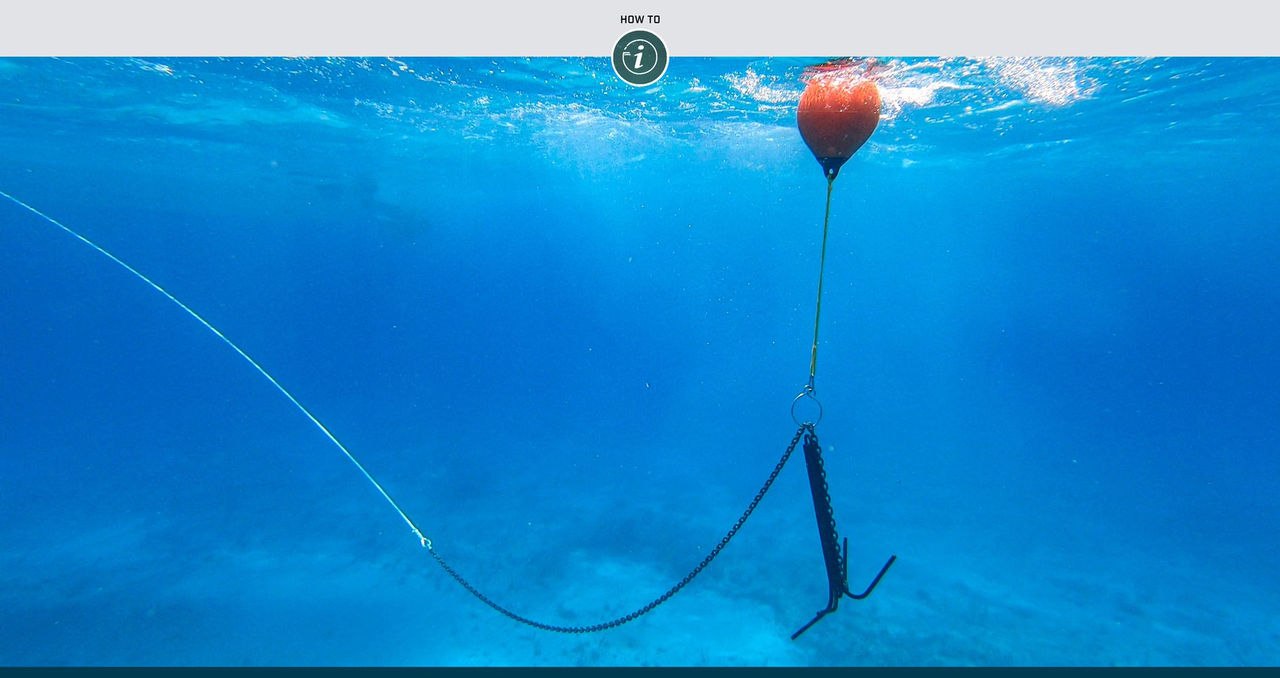Precision anchoring requires a fast and positive hookset, as it’s essential to hold at specific distances upcurrent of a wreck, section of reef or prominent bottom structure in many fishing situations. It’s a must to have an anchor sized according to the length of your boat, along with an extra-long length of chain and coils of rode, also based on vessel size. My boat is a 33-foot Mako® center-console, and I use either a grapnel or plow style of anchor, based on bottom compositions.
To see Poveromo’s entire anchoring system in action, check out the video at the bottom.
I use a shackle to attach a 5/16-inch chain to the anchor’s mud palm, which is the aft end of the anchor. This allows me to create a reverse pull when needed. I run the chain down along the shank, using 100-pound-test monofilament line to secure a link to the anchor’s shank eye, so that the anchor line pulls from its normal position. If the anchor fouls on the bottom, driving the boat forward will pop the monofilament line. The chain straightens out and pulls the anchor from the opposite direction, backing it out of a snag.
The extra-long length of chain – I use 15 feet for shallow water and 30 feet for deep water – adds weight and creates a false scope by keeping the end of the rode (or anchor line) down on the bottom, establishing that straight, forward pull on the shank that is necessary for the anchor to dig in.
My rode is either 5/8-inch diameter for general applications, which is easier to grip, or 1/2-inch diameter for deep-water jobs. The 1/2-inch rode creates less drag as it descends to bottom. I carry two 350-foot coils of rode, which can be joined within seconds.
The leading section of rode should have a thimble spliced into both ends to create strong loops, since one end will be joined to the anchor line via a shackle. Additional sections of rode should have an Alpine clip on one end and a thimble on the other. When more rode is required, simply use the Alpine clip to attach the new section of line onto the thimble of the preceding section. You can also attach them thimble-to-thimble with shackles.
Retrieving such a heavy system requires the use of a mooring-type inflatable ball, which increases the angle of the rode to break the anchor line free and float it to the surface, where it’s easily pulled back to the boat.
The simple setup consists of about 3 feet of 3/8-inch nylon rope attached to the ball. On the opposite end is a stainless spring clip that connects to an open-ended stainless ring about 6 inches in diameter. When it’s time to move, the steel ring is placed around the anchor rode and hooked to the spring clip. The buoy is tossed overboard. As the boat is motored toward the anchor, quartering the current to avoid the line, its motion forces the ball down the rode where the increasing pressure and angle created by its descent pops the anchor out. Provided you increase the boat’s speed as the anchor is rising, the rode will be pulled through the ring until the ring hangs up in the anchor, floating the anchor to the surface.
As for my windlass system on my 33-foot Mako, I regard that more for entertainment purposes, and not fishing. With an independent anchor, we can quickly clip a float to one end of a coil of rode and toss it all overboard when a big fish requires chasing. After boating or releasing that fish, we simply drive back to the float, retrieve the rode, cleat it off and resume fishing. You can’t do that with a windlass system.
See more from George Poveromo at GeorgePoveromo.com, or by following him on Facebook, YouTube and Instagram.




